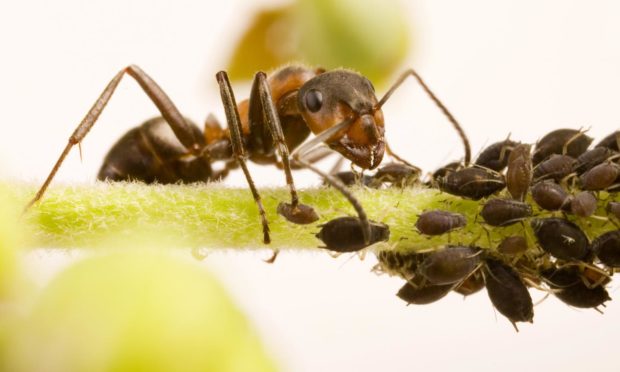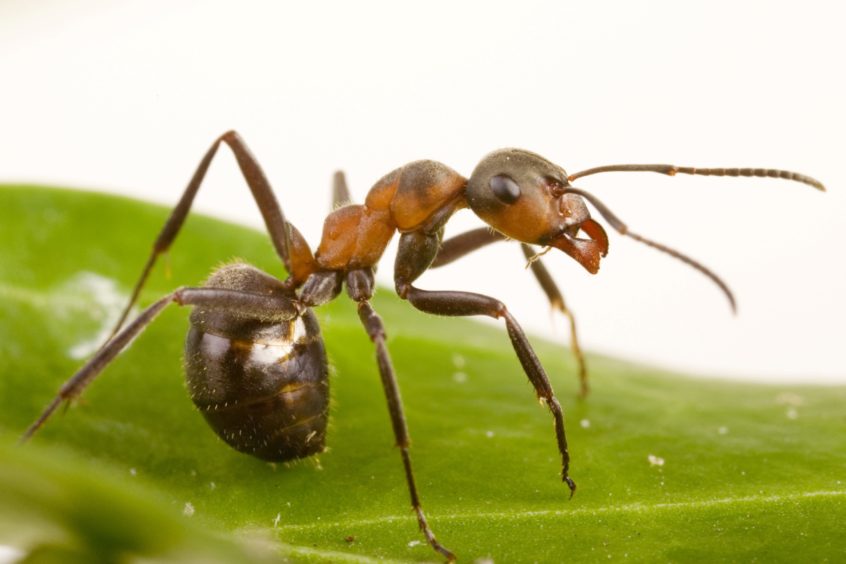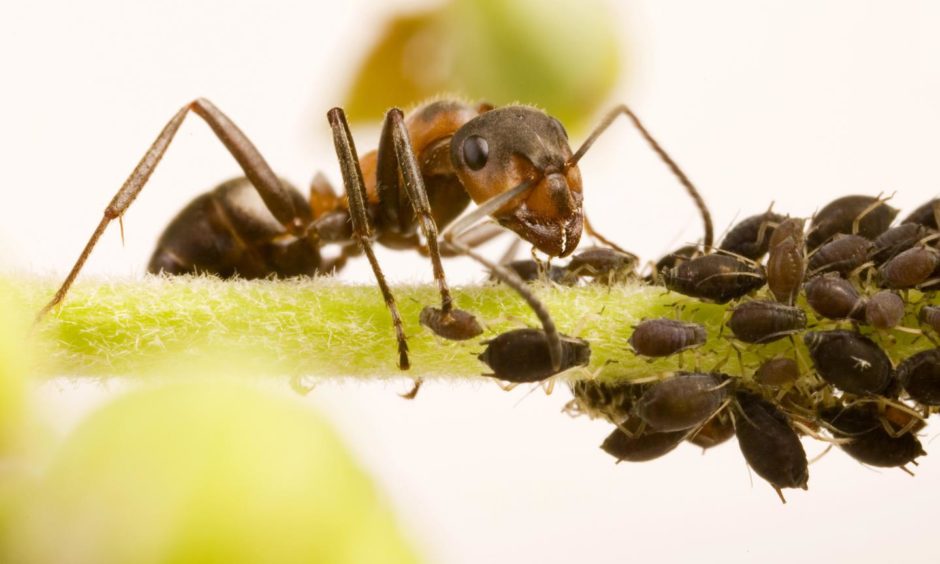It is my cardinal rule to never intentionally disturb wildlife, but nonetheless, I couldn’t resist gently placing my finger on top of this wood ant nest deep in Abernethy Forest in Strathspey to see how these fascinating insects reacted to a potential threat – an experiment, if you like.
As I suspected, their response was swift, with several quickly swarming over my finger and trying to bite it – although their jaws were too small to inflict pain; more a minor irritant.
These workers were mighty feisty, and if I were to miniaturise myself to their level, then it would be like facing a pride of lions.
I withdrew my finger and sat cross-legged on a thick carpet of blaeberry by this large domed nest, examining the busy activity of the wood ants as they swarmed over the surface, constantly on the move.
The dome was a marvel of engineering, covered in a thatch of pine needles, small twigs and other forest detritus, which keeps the nest dry and also helps absorb solar energy, ensuring the temperature of the nest is higher than the surroundings.
Somewhere deep inside will be the queen – or possibly several queens, whose sole job is to lay eggs.
Workers
Males are produced in spring, who will mate with the queens, but the overall majority of ants are workers, who are females that do not reproduce.
Each worker has a specific job, some keep the nest repaired, others forage for food, while many will tend the queen and her brood.
It is a complex social set-up, an insect society where each individual has place and purpose. Indeed, the nest community could be likened to a single organism, but one made up of many different parts.
Unlike a conifer plantation, the open-spaced character of the naturally occurring Scots pines here near Boat of Garten ensures there is a luxuriant growth of blaeberry, cowberry and other plants on the woodland floor, which offers shelter for many invertebrates, which in turn provides food for other creatures.
Tranquility
The weather is warm and flies buzz around my head.
I am reluctant to leave, for it had taken me a while to find this wood ant’s nest.
So, I stay a while longer, absorbing the peace and tranquillity of the forest.
A family party of coal tits bound through the branches above and I hear the voluminous song of a wren nearby.
This is how the forest looked since the dawn of time, a surviving remnant of the wildwood.
But all is not as it seems, for there have been changes over the millennia; wolves and lynx once roamed here, and beavers would have lodged by a nearby loch.
So, in that sense this isn’t a true wildwood – but maybe one day, with a bit of determination and imagination, it will once more become so, and that really would be something.
Info
The main food of wood ants is sugary honeydew produced by aphids, which the worker ants ‘milk’ from them.
The developing ant brood also require protein, and thus, a variety of insects are also devoured.












